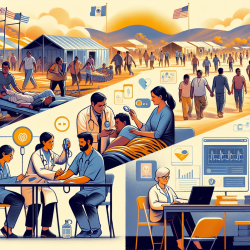Introduction
The Golden Crescent, comprising Afghanistan, Iran, and Pakistan, is a significant global hub for opium production and distribution. This region has witnessed a parallel rise in the opium trade and the spread of HIV, largely due to socio-political turmoil. As practitioners in speech-language pathology, it's crucial to understand how these socio-economic factors impact child development and learning, and how we can leverage data-driven insights to improve outcomes.
Understanding the Impact
The research article "Opium trade and the spread of HIV in the Golden Crescent" highlights the intricate relationship between the opium trade and the increasing incidence of HIV. This connection is not merely a public health issue but a socio-economic challenge that affects the well-being of communities, including children. The rise in opiate trafficking and addiction has exacerbated the spread of HIV, impacting families and, consequently, the children within these communities.
Data-Driven Insights for Practitioners
For practitioners, understanding the data and trends presented in the research can enhance our approach to therapy and intervention. Here are some key insights:
- Recognize the Broader Context: Understanding the socio-economic background of children affected by these issues can inform more empathetic and effective intervention strategies.
- Focus on Holistic Approaches: Addressing the mental health and socio-economic challenges faced by families can improve the overall effectiveness of speech and language therapy.
- Advocate for Supportive Policies: Encourage policies that support harm reduction and the substitution of opium with licit crops, which can lead to healthier community environments.
Encouraging Further Research
While the research provides a comprehensive overview of the challenges, it also opens avenues for further exploration. Practitioners are encouraged to delve deeper into the socio-economic factors affecting child development in regions impacted by the opium trade. By conducting localized studies, practitioners can gather data that directly informs their practice and advocacy efforts.
Conclusion
As practitioners, our role extends beyond therapy sessions. By understanding and addressing the broader socio-economic factors impacting our clients, we can contribute to healthier futures for children. The research on the opium trade and HIV spread in the Golden Crescent is a call to action for all of us to engage with data, advocate for change, and empower communities.
To read the original research paper, please follow this link: Opium trade and the spread of HIV in the Golden Crescent.










